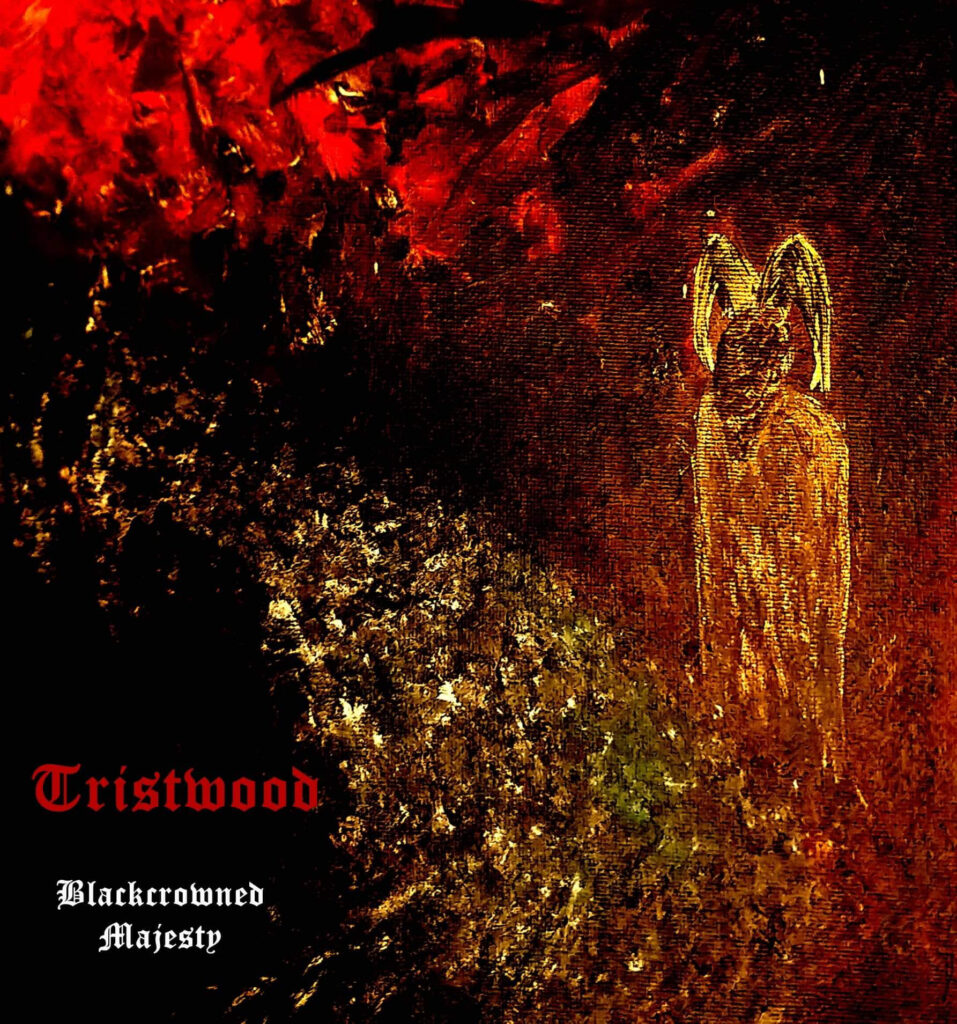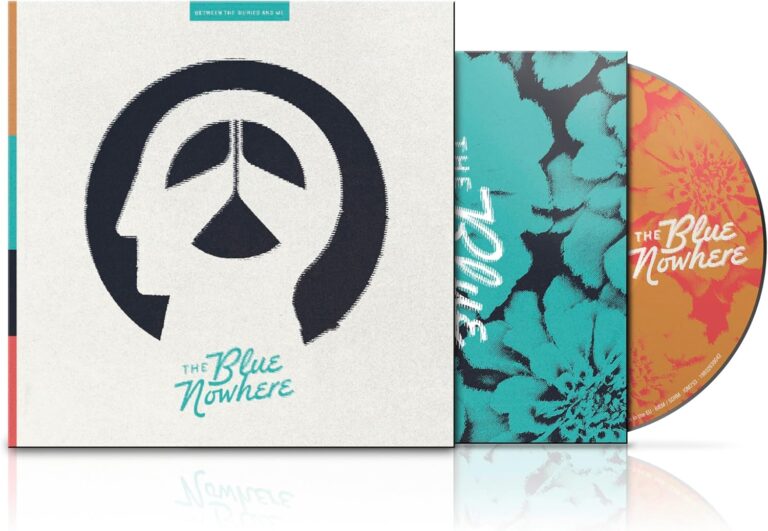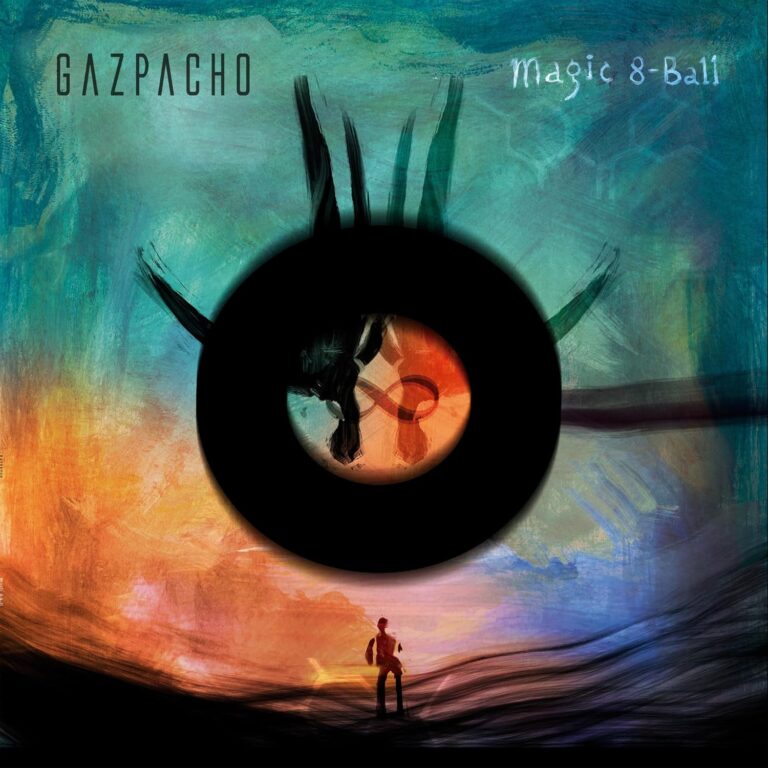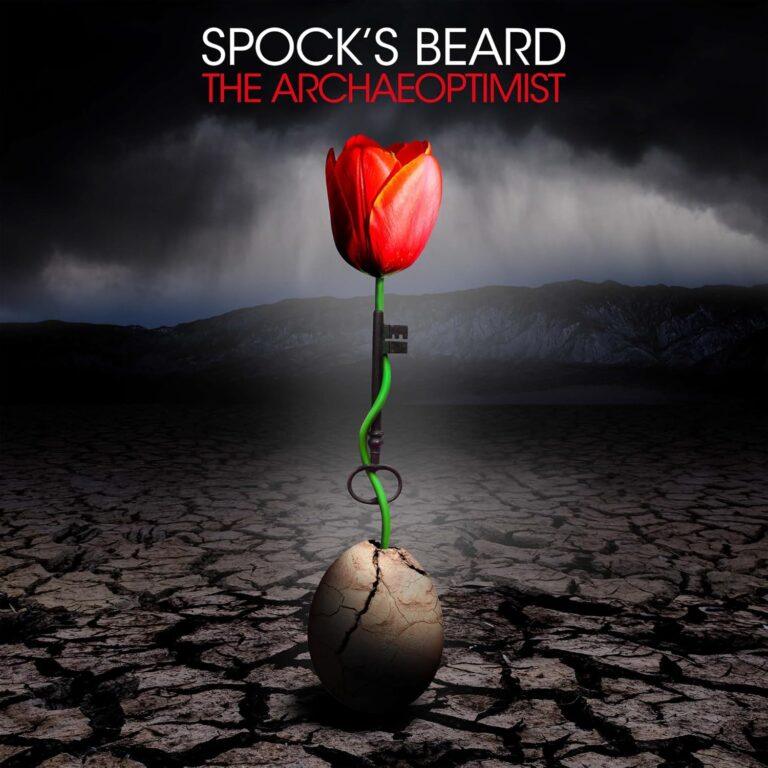
“The album “Blackcrowned Majesty” deals with the return of Ar’ath to Ma’haxul. It describes in a musical way how she flows to the north after her destruction and is crowned again by her faithful.”
…And so begins a strange journey into the world of Tristwood, a longstanding band form Austria, whose admirable commitment to the underground has, so far, spawned four full length LPs and a slew of mini-albums and EPs. Drawing on industrial and post punk, as well as the icy savagery of black metal, Tristwood have a very specific sound and you’ll know within seconds whether this is a record for you. The music lies heavily compressed within a narrow spectrum, the emphasis on treble enhancing the eerie dissonance and mechanistic rhythms, yet there is nuance to be found and there’s a depth to the music not immediately apparent amidst the lo-fi production values.
Opening with Re-Enthronement Of The Damned, the industrial elements are audible from the start in Deimon’s synths. Neru’s guitars, utterly shorn of the lower register, buzz with a sense of urgency, paving the way for the demonic vocals to take centre stage. A harrowing take on black metal reminiscent of Thorns and Doheimsgard, the industrial elements only serve to make the band’s assault all the more intense, and the track provides the perfect gateway into this intense, yet hypnotic album. If anything, He Who Traversed A Greater Oblivion, powered by HMG’s mechanical percussion, is even more apocalyptic. A misanthropic assault on the senses that seems to buzz and hum with malevolent intent, it pales in the face of A Blackcrowned Majesty, a taut album highlight that makes good the band’s promise of a “cold, very hard piece of extreme metal in digital form”, Even Deimon’s flute, judiciously applied amidst the clattering industrial elements, does little to sweeten the atmosphere, and the overall impression is of being caught in a merciless industrial press, staring mute in horror at the slowly descending ceiling. Following such an epic piece of music, the band opt for a more-straight forward groove on the churning Her Wraith Through Stygonian Lands. It has all the force of a battering ram and brings the first half of the album to a brutal, minimalist close.
Opening the second half of the record, The Hall Of Rauthra’s Fate is a blackened smear, with guttural vocals tearing across the surface of Neru an Jegger’s guitars. Yet, for all the surface noise, the tight discipline remains, and the track ends abruptly. Allowing a degree of pulsing bass into the mix gives the sinister Acherontic Deathcult greater depth, and the track feels driven by some irresistible force towards its conclusion, the subtle strings that appear providing a sense of the epic amidst the razor-sharp guitars and harsh vocals. Little prepares the listener for the sheer, blazing intensity of Bone Cathedral, however. A veritable storm of snatched riffs and ferocious double-kick, it leaves the listener fevered and shaken before the lengthy finale of Nightshade Eternal brings the album to a close. A more imperial take on black metal, the wind-tunnel noise and epic riffs serve to paint a grim mental picture of decayed halls and faded grandeur, reminiscent of mid-period Behemoth.
That Blackcrowned Majesty is not for everyone should go without saying. Harrowingly extreme, it is a challenge thrown in the face of those whose reliance on the studio serves to do nothing so much as smooth the edges from their work. Taken on its own terms, the album is a success, although there are moments when you long for the electronic elements to break through more frequently, and there’s a sense that the band are torn between their allegiance to extremity and a more ambitious approach that filters to the surface from time to time. It is a difficult line to walk and when, as on A Nighshade Eternal, the band get the formula exactly right, it is something to behold. Dense, dark and utterly divorced form the mainstream, Blackcrowned Majesty is an impressive piece of work and, if not without its flaws, it provides a refreshing alternative to the increasingly clean lines of modern death metal. 8




